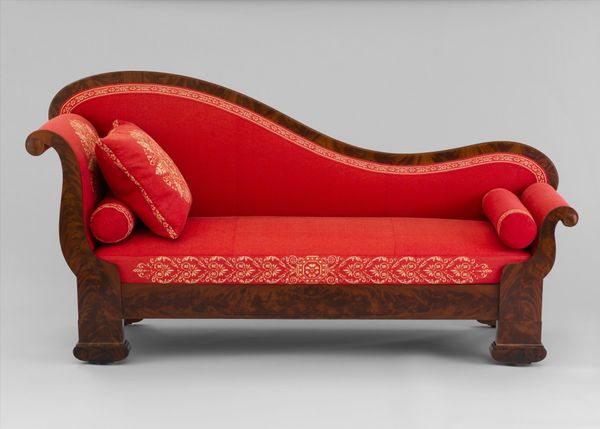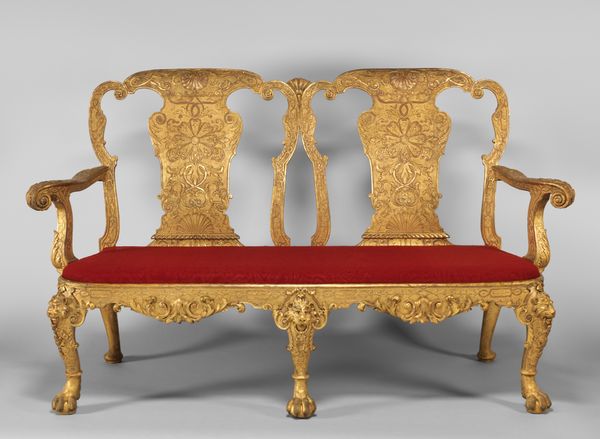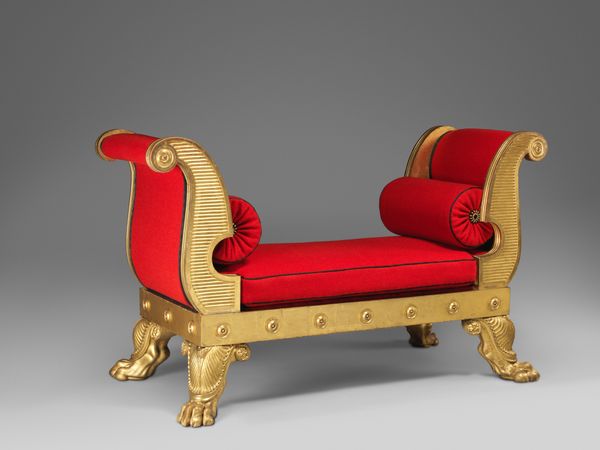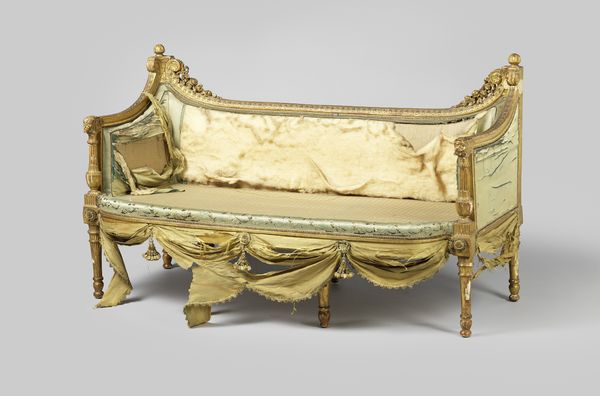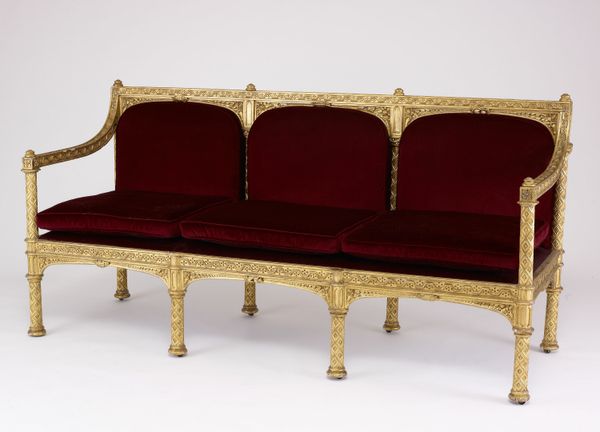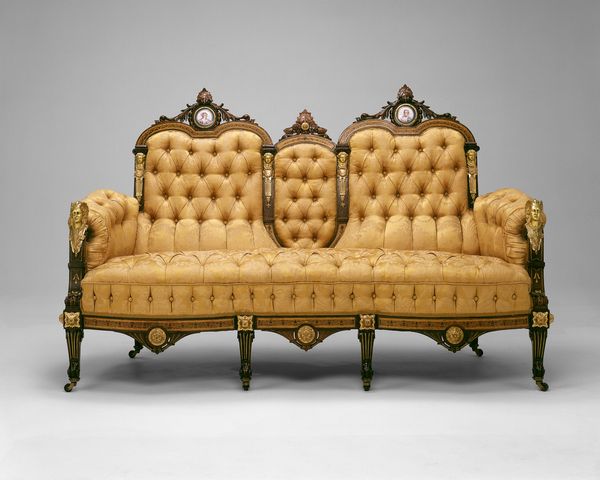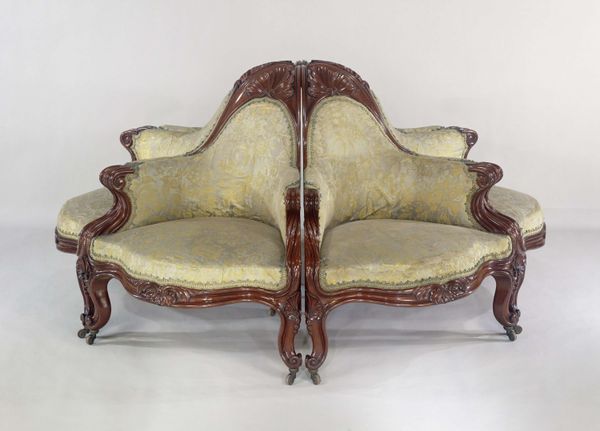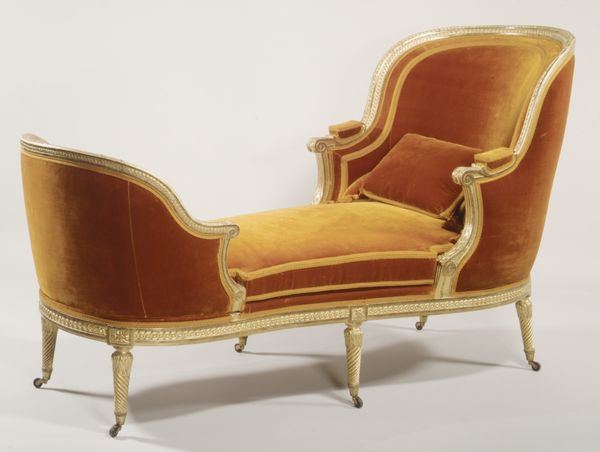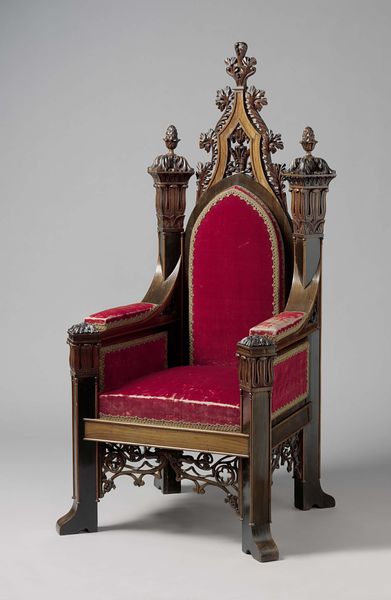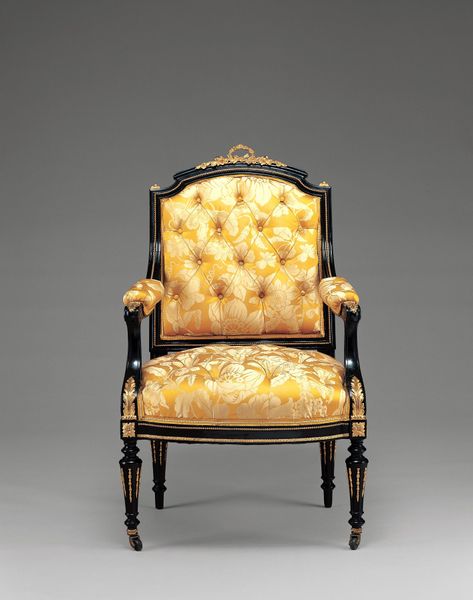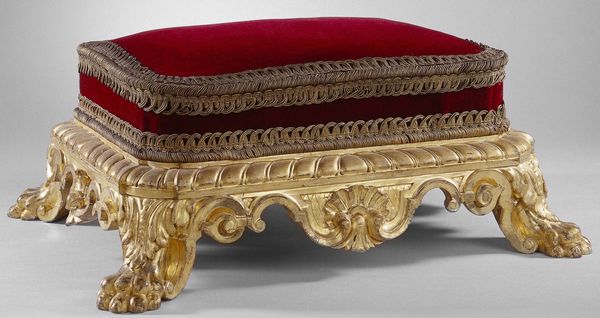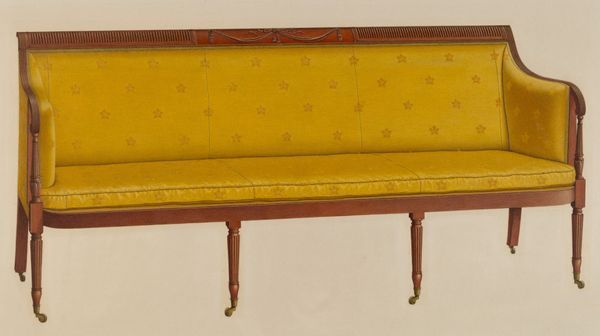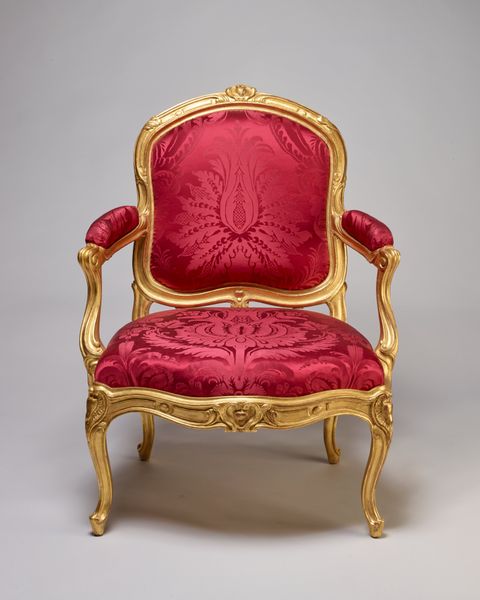
gold, wood
#
gold
#
furniture
#
romanticism
#
united-states
#
wood
Dimensions: 104 x 35 x 27 1/2 in. (264.16 x 88.9 x 69.85 cm)
Copyright: Public Domain
Editor: Take a look at this "Sofa" from around 1820, currently housed in the Minneapolis Institute of Art. The striking contrast between the wood and gold detailing gives off a vibe of opulence. The legs shaped like eagle talons really make it stand out! How might we interpret the cultural relevance of an object like this? Curator: That contrast you've noticed is key. The extravagance wasn't merely aesthetic, it was a statement. This sofa, like many decorative objects of its time, tells us about the social stratification and power structures of the early 19th-century United States. Who do you imagine commissioned this, and what message were they trying to send? Editor: I imagine only the wealthy would purchase such an ornate piece! A demonstration of their success, maybe? Curator: Exactly. It reflects a period when industrial growth began concentrating wealth, and those with means sought to emulate European aristocracy. The Romantic style, seen in the curves and decorative elements, signaled cultivated taste and worldliness, fitting into broader societal aspirations. Consider how furniture, especially in domestic settings, projects particular narratives to visitors, influencing opinions and perceived status. Editor: So, even a sofa becomes a tool of social commentary. Did such furniture influence political discourse? Curator: Indirectly, perhaps. By reinforcing a visual language of status and success, it subtly normalized and perpetuated class distinctions. These objects helped shape expectations of wealth and privilege within the evolving American socio-political landscape. What do you make of the museum displaying this? Editor: It presents a complex issue: the beauty and craftsmanship versus its embodiment of social disparities. I realize I appreciate the skill, but with a more critical view of the historical implications. Curator: Precisely. We, as consumers and curators of art, have to appreciate and examine all cultural backgrounds of artworks and how they fit in the current narrative of inclusivity and access for everyone. It gives food for thought for us to do our part!
Comments
minneapolisinstituteofart almost 2 years ago
⋮
Greek and Roman excavations helped spark an interest in Classically-inspired design in the early nineteenth century. Archeological elements such as this sofa's scrolled arms and carved dolphin motif proved particularly popular amongst Americans eager to associate their young country with ancient republics. This "Grecian sofa" belongs to an elite group of seven examples thought to have been made in New York around 1820. Similar sofas in this same group can be found at the Metropolitan Museum of Art in New York, the White House, and the Bayou Bend Collection of the Museum of Fine Arts, Houston.
Join the conversation
Join millions of artists and users on Artera today and experience the ultimate creative platform.
